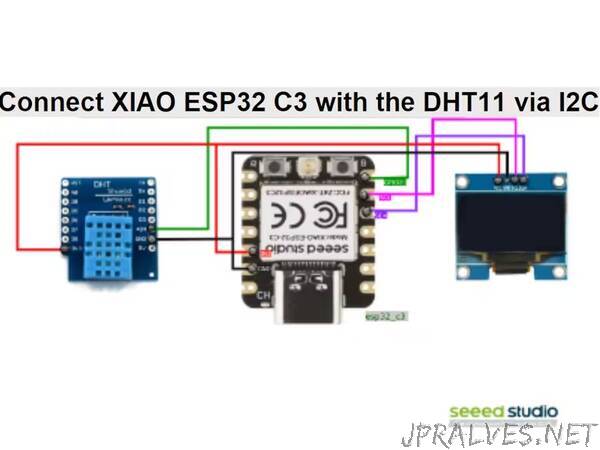
“DIY smart home device based on XIAO ESP32C3 connecting DHT11 sensor and an OLED display to monitor humidity and temperature.
Connect XIAO ESP32 C3 with the DHT11 via I2C
Introduction:
Creating your gadgets not only empowers you but also adds a personalized touch to your living space. In this project, we will look into DIY electronics to measure temperature and humidity using the XIAO ESP32C3 microcontroller, DHT11 sensor, and an OLED display by blending technology and creativity!
What we need
- XIAO ESP32C3 microcontroller:
This is the brain of our hygrometer, responsible for processing sensor data and driving the OLED display.
It is a low-power, Wi-Fi, and Bluetooth-enabled microcontroller designed for use in Internet of Things (IoT) applications. It is based on the ESP32-C3 chip from Espressif Systems and features a dual-core processor, 400 KB of SRAM, and 2 MB of flash memory.
- OLED display:
An OLED (organic light-emitting diode) display is a type of flat-panel display that uses organic materials to emit light. OLED displays are self-emissive, meaning that each pixel can emit its light without the need for a backlight. This allows for thinner, more flexible, and more energy-efficient displays compared to traditional LCD (liquid crystal display) panels.
In this project, it showcases humidity levels in real-time, adding a touch of elegance to our device.
-DHT11 sensor:
The DHT11 sensor is a low-cost, digital humidity and temperature sensor.
It has a measurement range of 20% to 90% relative humidity and -40°C to 80°C temperature. The accuracy of the sensor is ±5% for humidity and ±2°C for temperature.
It will be our companion for measuring humidity with precision and reliability.
Setting Up the Hardware
We begin by assembling our components. Connect the DHT11 sensor to the XIAO ESP32C3 microcontroller, ensuring proper wiring and compatibility.”
